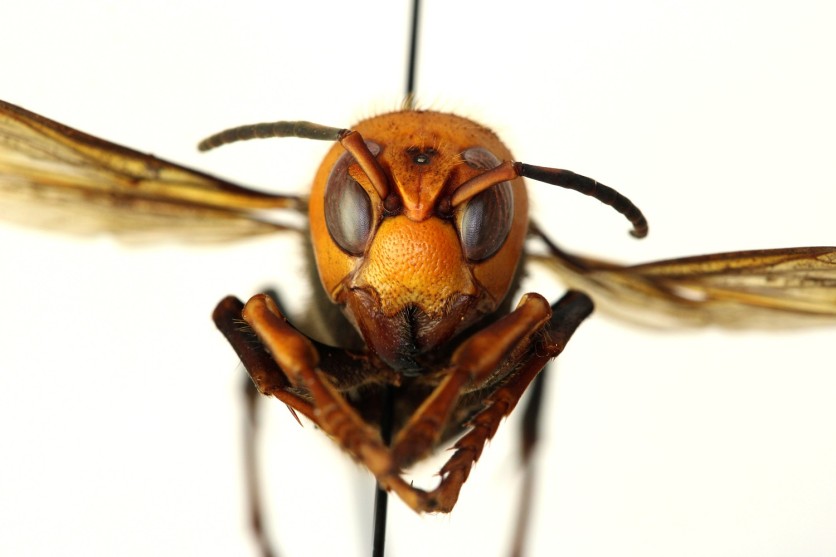Texas A&M AgriLife is leading a task force against murder hornet at the request of Texas Gov. Greg Abbott following sightings in Washington state.
The task force was formed to inform the public, monitor ports of entry, and assist with mitigation efforts to protect the state's honeybees from the Asian giant hornet (Vespa mandarinia), which has been dubbed the "murder hornet" and was recently spotted in the country for the first time.

The university also said the task force brings together experts in agriculture, entomology, and homeland security. These include representatives from Texas A&M AgriLife Research, Texas A&M AgriLife Extension Service, the Texas A&M Department of Entomology, and the Center for Cross-Border Threat Screening and Supply Chain Defense, which is under the Department of Homeland Security Center for Excellence.
The giant hornet is the world's largest species of hornet, measuring up to 2 inches long. A video blogger described the insect's sting as "like someone has shoved a red-hot poker into your arm and does not remove it for close to six hours." The blogger regularly submits himself to insect bites and stings for his YouTube channel Brave Wilderness.
Experts increase surveillance in customs
"Although this pest has not been spotted in Texas, the hornet poses a threat to both agriculture and public health," said Texas A&M AgriLife vice-chancellor Patrick J. Stover in a statement. He is also the dean of the College of Agriculture and Life Sciences and director of Texas A&M AgriLife Research.
While the only confirmed sightings in the United States were in Blaine, Washington, which is approximately 1,800 miles from El Paso, there were also spotted in British Columbia, Canada.
Although sightings have been rare, it is important to contain the spread of species before the mating season starts in the fall. Texas state officials have called on the importance of monitoring the ports to ensure it does not enter the state via cargo, which is how authorities believe it reached North America.
"While widespread surveillance for the hornets in Texas is premature, we do need strategies to prevent the hornets' arriving here in cargo," said David Ragsdale, Ph.D., chief scientific officer and associate director of AgriLife Research, and professor in the Department of Entomology.
"Right now, what we need to know is whether the Asian giant hornets have successfully overwintered in British Columbia or Washington state," said Ragsdale adding that the hornet's life cycle leaves a window for potential control strategies.
Currently, Customs and Border Protection staff undergo training on how to detect the Asian giant hornet as Greg Pompelli, director of the Center for Cross-Border Threat Screening and Supply Chain Defense, told Newsweek.
"We are also increasing surveillance of incoming containers and evaluating opportunities for specialized detection, such as possibly using scent-trained dogs to find these hornets hidden in cargo or luggage," he added.

Hornets versus honeybees
While hornets are linked to 30 to 50 deaths in Japan each year, mostly due to allergic reactions, the risk is higher on honeybees.
The Texas A&M AgriLife Extension explains that it would only take 15 to 30 hornets to destroy a hive containing 30,000 to 50,000 within just a few hours.
Hornets start with a "slaughter phase," decapitating the bees before occupying the hive and taking the developing larvae to feed their own young.
While bees in Japan have developed defensive methods against Asian giant hornets, experts warn that America's bees could be an easy target for these murderers.
In a recent trip to Southeast China, Brent Sinclair, a biology professor at the University of Western Ontario in Canada, researched on the Asian giant hornets, which he described as "little helicopters."
"If they can get into a honeybee hive-and they will-they'll systematically eat their way through all the brood of a hive within a few days," he said, adding these predators are "really bad news for beekeepers."




